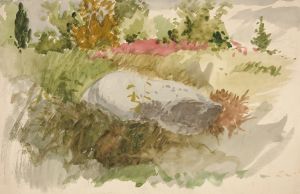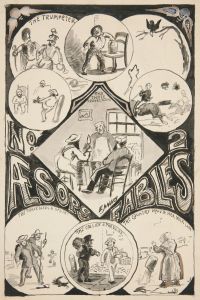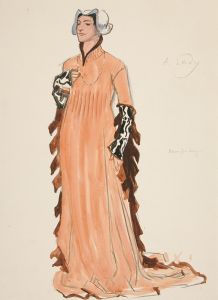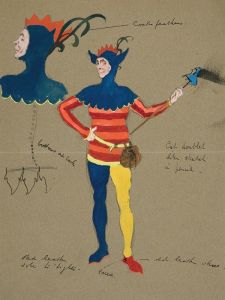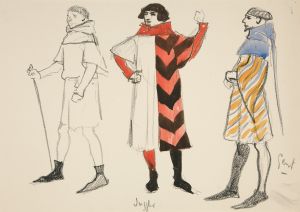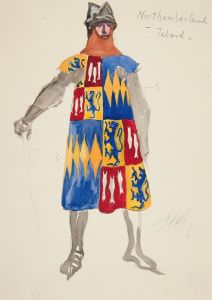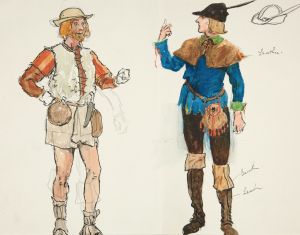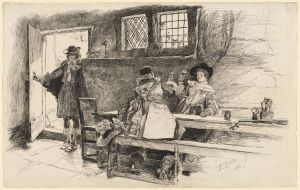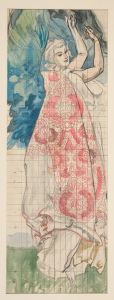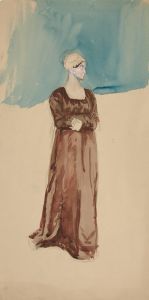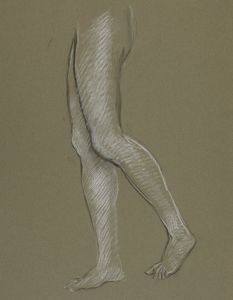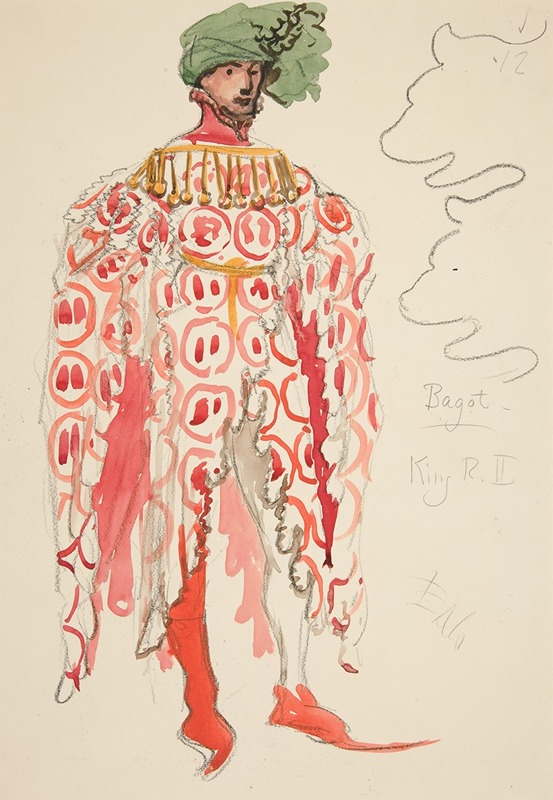
Bagot, costume sketch for Henry Irving’s Planned Production of King Richard II
A hand-painted replica of Edwin Austin Abbey’s masterpiece Bagot, costume sketch for Henry Irving’s Planned Production of King Richard II, meticulously crafted by professional artists to capture the true essence of the original. Each piece is created with museum-quality canvas and rare mineral pigments, carefully painted by experienced artists with delicate brushstrokes and rich, layered colors to perfectly recreate the texture of the original artwork. Unlike machine-printed reproductions, this hand-painted version brings the painting to life, infused with the artist’s emotions and skill in every stroke. Whether for personal collection or home decoration, it instantly elevates the artistic atmosphere of any space.
Edwin Austin Abbey's "Bagot, costume sketch for Henry Irving’s Planned Production of King Richard II" is a preparatory artwork created by the American artist and illustrator Edwin Austin Abbey (1852–1911). Abbey was renowned for his historical and literary illustrations, as well as his detailed and historically informed costume designs. This particular sketch was part of a series of preparatory works for a proposed theatrical production of William Shakespeare's play King Richard II, which was to be staged by the celebrated English actor-manager Sir Henry Irving (1838–1905).
The sketch depicts the character of Bagot, one of King Richard II's loyal followers, in a costume designed to reflect the historical period of the late 14th century, during which the play is set. Abbey's meticulous attention to historical accuracy is evident in the design, as he was known for conducting extensive research into period clothing, fabrics, and accessories. The costume sketch showcases Abbey's skill in combining artistic flair with historical authenticity, a hallmark of his work.
Henry Irving, one of the most prominent figures in Victorian theater, had a reputation for producing lavish and meticulously detailed Shakespearean productions. Although Irving had planned to stage King Richard II with Abbey's involvement in the costume and set design, the production ultimately never came to fruition. Despite this, Abbey's sketches remain significant as standalone works of art and as examples of the collaborative process between visual artists and theatrical producers during the late 19th and early 20th centuries.
The sketch is executed in a combination of media, including pencil, ink, and watercolor, which Abbey often used to bring his designs to life. It is part of a larger body of work that Abbey created during his career, which includes illustrations for literary works, murals, and other theatrical costume designs. Today, this piece is valued not only for its artistic merit but also for its insight into the intersection of art, theater, and historical scholarship during the Victorian era.
The artwork is housed in the collection of the Yale University Art Gallery, which holds a significant number of Abbey's works. It serves as an example of Abbey's contribution to the visual culture of his time and his collaboration with prominent figures in the arts.






